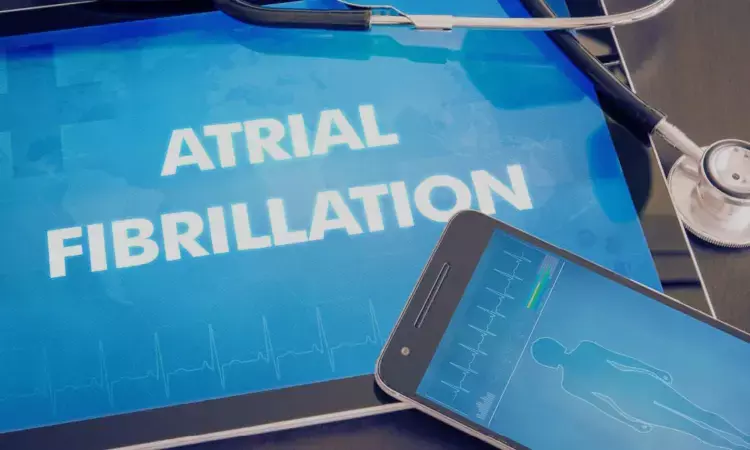- Home
- Medical news & Guidelines
- Anesthesiology
- Cardiology and CTVS
- Critical Care
- Dentistry
- Dermatology
- Diabetes and Endocrinology
- ENT
- Gastroenterology
- Medicine
- Nephrology
- Neurology
- Obstretics-Gynaecology
- Oncology
- Ophthalmology
- Orthopaedics
- Pediatrics-Neonatology
- Psychiatry
- Pulmonology
- Radiology
- Surgery
- Urology
- Laboratory Medicine
- Diet
- Nursing
- Paramedical
- Physiotherapy
- Health news
- Fact Check
- Bone Health Fact Check
- Brain Health Fact Check
- Cancer Related Fact Check
- Child Care Fact Check
- Dental and oral health fact check
- Diabetes and metabolic health fact check
- Diet and Nutrition Fact Check
- Eye and ENT Care Fact Check
- Fitness fact check
- Gut health fact check
- Heart health fact check
- Kidney health fact check
- Medical education fact check
- Men's health fact check
- Respiratory fact check
- Skin and hair care fact check
- Vaccine and Immunization fact check
- Women's health fact check
- AYUSH
- State News
- Andaman and Nicobar Islands
- Andhra Pradesh
- Arunachal Pradesh
- Assam
- Bihar
- Chandigarh
- Chattisgarh
- Dadra and Nagar Haveli
- Daman and Diu
- Delhi
- Goa
- Gujarat
- Haryana
- Himachal Pradesh
- Jammu & Kashmir
- Jharkhand
- Karnataka
- Kerala
- Ladakh
- Lakshadweep
- Madhya Pradesh
- Maharashtra
- Manipur
- Meghalaya
- Mizoram
- Nagaland
- Odisha
- Puducherry
- Punjab
- Rajasthan
- Sikkim
- Tamil Nadu
- Telangana
- Tripura
- Uttar Pradesh
- Uttrakhand
- West Bengal
- Medical Education
- Industry
Gasdermin D emerges as potential therapeutic target for atrial fibrillation, suggests study

Atrial fibrillation (AF) is a common form of heart arrhythmia, a serious condition in which the heart beats so fast that its upper chambers, the atria, quiver. This irregular heartbeat can increase the risk of severe conditions, including heart failure, dementia and stroke.
“My lab has been studying the role of inflammation in the initiation and persistence of AF for many years. In this multidisciplinary study, we investigated the function of gasdermin D, a key participant in inflammatory pathways, in atrial heart cells and its potential contribution to AF,” said corresponding author Dr. Na Li, professor of medicine at Baylor College of Medicine.
The work is published in the European Heart Journal.
Previous studies have shown that in immune cells, gasdermin D is cut into two fragments; NT-gasdermin D, which can trigger cell death in immune cells, and CT-gasdermin D, whose function is unknown. “Although prior studies suggest that gasdermin D activation could contribute to a heart attack by causing cell death, the precise function of gasdermin D in heart cells remains poorly understood,” Li said.
The researchers studied sections of human atria to assess the levels of gasdermin D and found increased levels of the protein in AF patients. The team also worked with a mouse model in which they increased the levels of NT-gasdermin D only in atrial heart cells. “These mice had an increased susceptibility to AF,” Li said.
Further studies showed that NT-gasdermin D does not kill most of the heart cells but mediates the formation of pores in the cell membrane. The pores facilitate the release of heart cell-produced cytokines, immune mediators that promote the infiltration of immune cells to the atria, which can initiate events leading to atrial dysfunction. Interestingly, at the same time the cells enhanced membrane-repair mechanisms, which acted as a countermeasure to pore formation and prevented atrial cell death.
“Additionally, NT-gasdermin D directly targeted mitochondria, the cell’s main source of energy, mediating pore formation and increasing the release of mitochondrial reactive oxygen species (ROS),” said first author Dr. Yue Yuan, a postdoctoral associate in the Li lab. “As ROS pours into the cells through the mitochondria, it triggers the abnormal release of calcium, which in turn promotes events that generate arrhythmias.”
Supporting these findings, the team found that mitochondria-specific antioxidant MitoTEMPO, which scavenges ROS, mitigated arrhythmias induced by NT-gasdermin D. A mutant NT-gasdermin D lacking the ability to form pores failed to cause mitochondrial dysfunction or induce atrial arrhythmia. And eliminating the gene for gasdermin D also prevented spontaneous AF development in the animal model.
“Our study reveals that NT-gasdermin D plays a novel role in AF development through multifaceted mechanisms,” Yuan said. “Our findings support that atrial NT-gasdermin D contributes to heart arrhythmias via a unique mechanism that does not involve cell death but promotes mitochondrial dysfunction.”
“The findings suggest that mitochondrial-targeted therapy, either by reducing ROS production or inhibiting gasdermin D, may prevent triggering AF,” Li said. “This positions gasdermin D as a promising target for novel therapeutic option for AF.”
Reference:
Yue Yuan, Pascal Martsch, Xiaohui Chen, Enrique Martinez, Luge Li, Jia Song, Theresa Poppenborg, Florian Bruns, Jong Hwan Kim, Markus Kamler, James F Martin, Issam Abu-Taha, Dobromir Dobrev, Na Li, Atrial cardiomyocyte-restricted cleavage of gasdermin D promotes atrial arrhythmogenesis, European Heart Journal, 2025;, ehaf024, https://doi.org/10.1093/eurheartj/ehaf024.
Dr Kamal Kant Kohli-MBBS, DTCD- a chest specialist with more than 30 years of practice and a flair for writing clinical articles, Dr Kamal Kant Kohli joined Medical Dialogues as a Chief Editor of Medical News. Besides writing articles, as an editor, he proofreads and verifies all the medical content published on Medical Dialogues including those coming from journals, studies,medical conferences,guidelines etc. Email: drkohli@medicaldialogues.in. Contact no. 011-43720751


